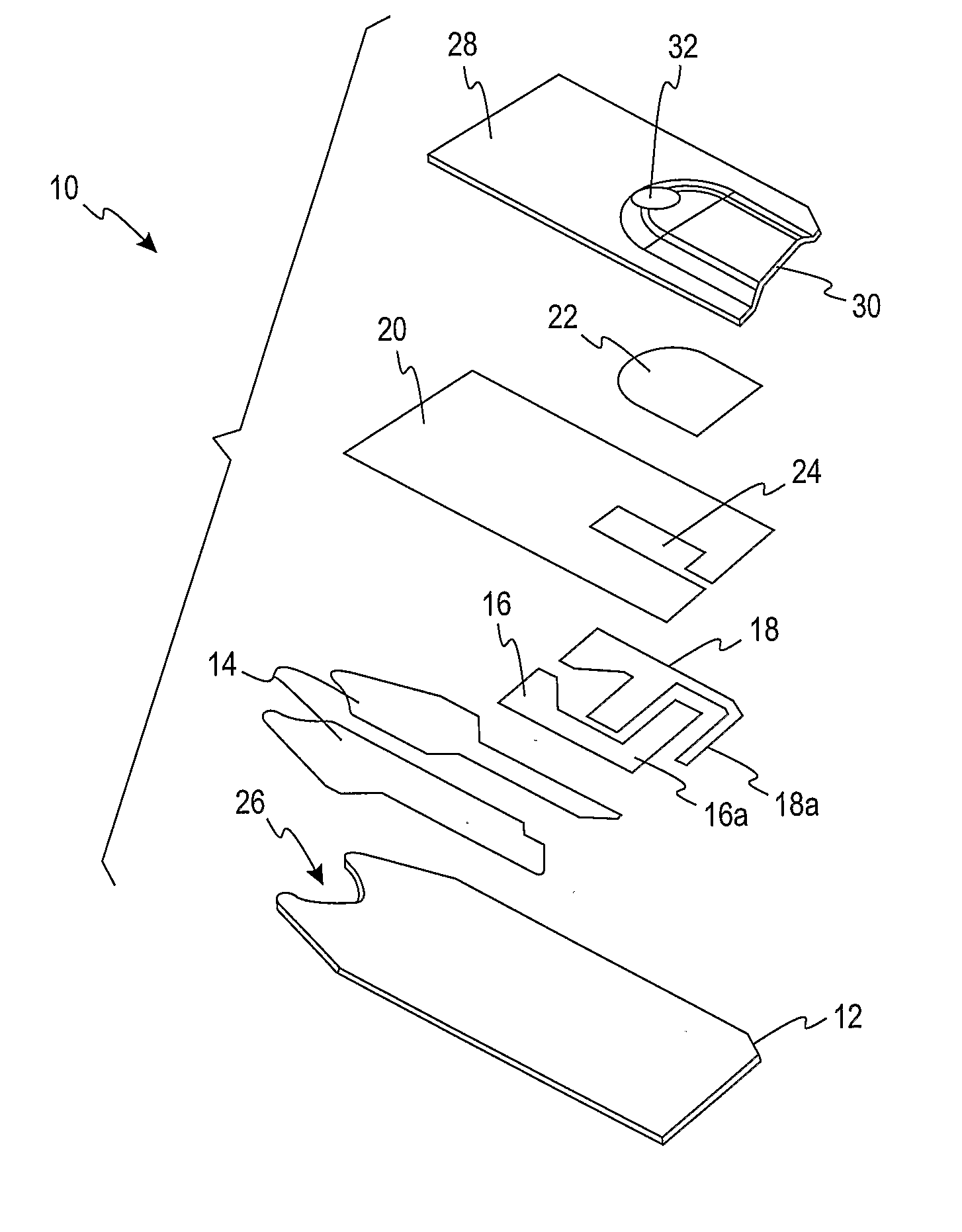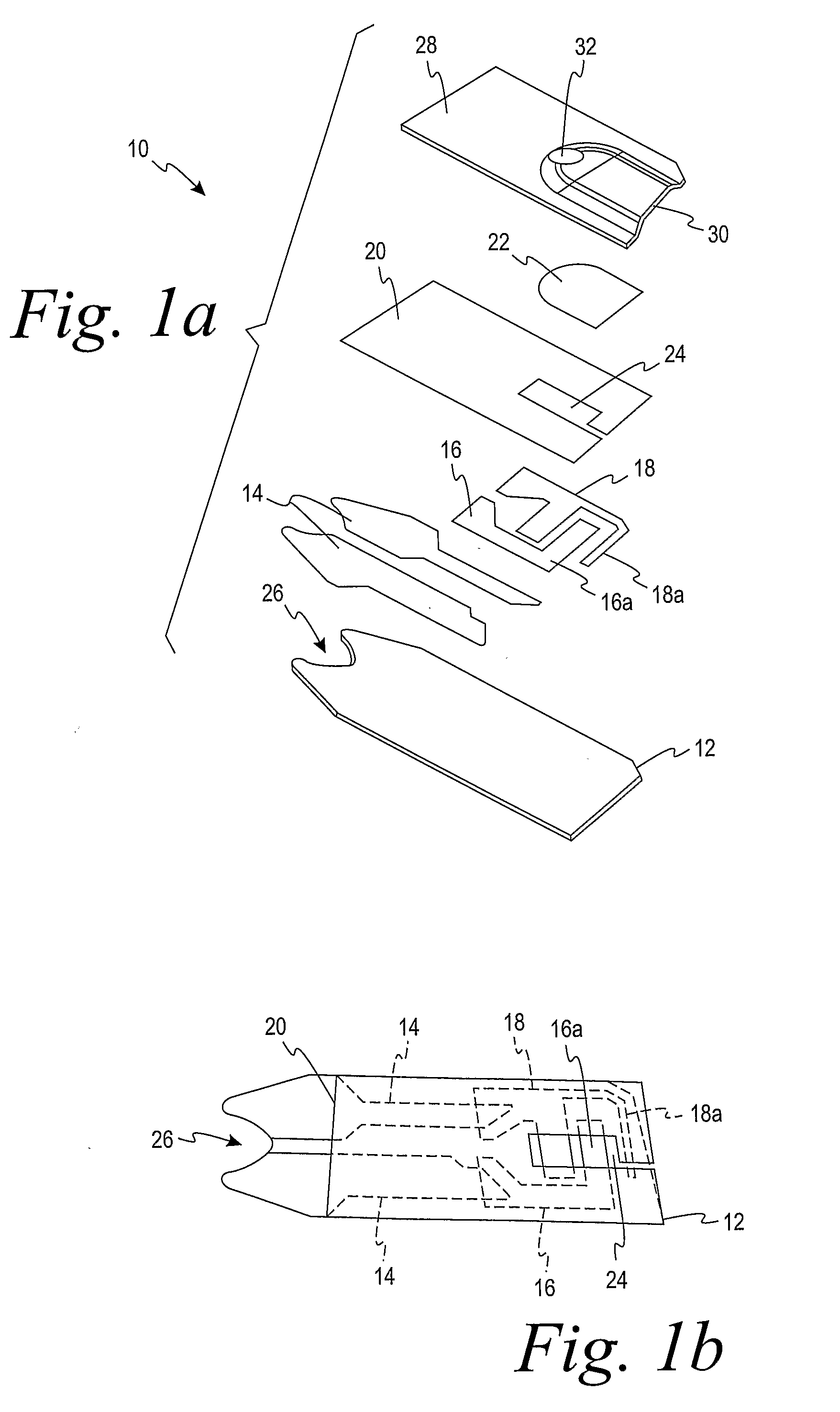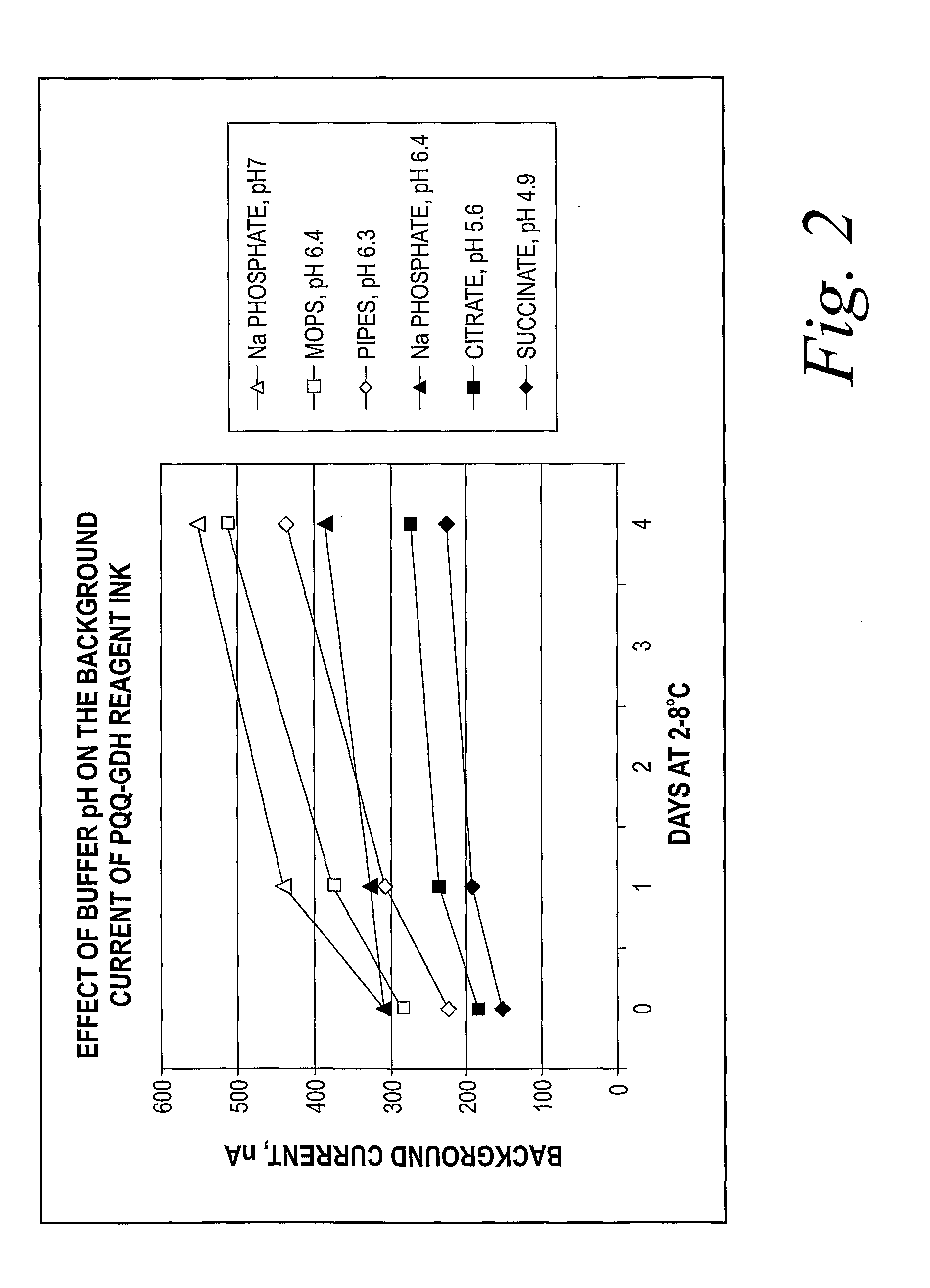Reagent Composition and Methods of Using and Forming the Same
a technology of reagents and compositions, applied in the field of reagents, can solve problems such as loss of enzyme activity, and achieve the effect of avoiding premature loss of activity
- Summary
- Abstract
- Description
- Claims
- Application Information
AI Technical Summary
Benefits of technology
Problems solved by technology
Method used
Image
Examples
example 1
[0052]A 75 mM calcium acetate buffer having a pH of 5.3 was prepared by adding calcium acetate and glacial acetic acid. To the buffer solution, the following compounds were added: 10 mM CaCl2, 0.05 wt % Triton X-100 surfactant, 1-3 wt % Cabosil M5 amorphous untreated fumed silica powder, and 4-8 wt % hydroxyethyl celluose. After allowing 16 hours for hydration of the silica and cellulose, 15-20 wt % potassium ferricyanide and, 3 to 8 units of GDH-PQQ were added to each milligram of reagent ink. The reagent ink was mixed at 600 rpm with a blade mixer for about 10 to 20 minutes to produce a reagent composition having a viscosity about 80,000 to 140,000 cps.
[0053]The reagent composition was screen printed onto a substrate containing electrodes and dried at 45-50° C. for 5 minutes.
example 2
[0054]Glucose sensors were prepared using the reagent composition of Example 1 and tested with blood samples containing known glucose contents and having 40% hematocrit. A potential of 200 to 400 millivolts was applied to the electrodes and the current measured ten seconds after applying the potential was used to determine the glucose contents of the samples. The results of these tests are shown in FIG. 5 where the response of an Ascensia™ AUTODISC® Glucose meter programmed for a 10 second test time are plotted against the glucose content measured by the industry standard YSI glucose instrument. It can be seen that a linear response was obtained, that was relatively insensitive to the concentration of the enzyme-cofactor concentration within the range studied.
[0055]The sensors also demonstrated good dose response when compared with the results obtained from the YSI instrument, an industry standard. The bias relative to the YSI instrument results is shown in FIG. 6. The bias was with...
embodiment a
Alternative Embodiment A
[0056]A reagent composition for screen-printing electrochemical biosensors comprising:
[0057](a) glucose dehydrogenase (GDH) and co-factor pyrrolo-quinoline quinone (PQQ) for oxidizing glucose in a biological sample;
[0058](b) a hydrophilic polymer selected from the group consisting of cellulose derivatives, natural gums and gels, and water soluble synthetic polymers;
[0059](c) a thickening agent selected from the group consisting of amorphous untreated silica powder, talc, mica, diatomaceous earth, and natural and modified clays;
[0060](d) a buffer sufficient to maintain pH in the range of from about 4.5 to about 6.5 to 6.0;
[0061](e) a surfactant; and
[0062](f) a mediator.
PUM
| Property | Measurement | Unit |
|---|---|---|
| hydrophilic | aaaaa | aaaaa |
| viscosity | aaaaa | aaaaa |
| total weight | aaaaa | aaaaa |
Abstract
Description
Claims
Application Information
 Login to View More
Login to View More - R&D
- Intellectual Property
- Life Sciences
- Materials
- Tech Scout
- Unparalleled Data Quality
- Higher Quality Content
- 60% Fewer Hallucinations
Browse by: Latest US Patents, China's latest patents, Technical Efficacy Thesaurus, Application Domain, Technology Topic, Popular Technical Reports.
© 2025 PatSnap. All rights reserved.Legal|Privacy policy|Modern Slavery Act Transparency Statement|Sitemap|About US| Contact US: help@patsnap.com



